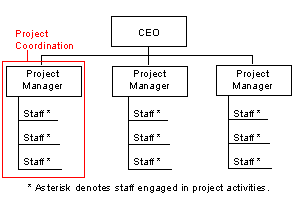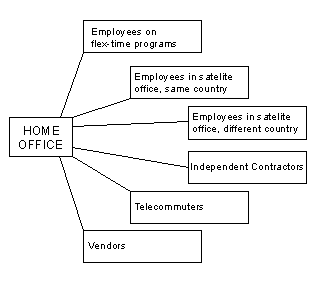Organizational Structures
The organizational structure affects the the handling,
decision-making, and planning of a project. Organizations are
structured in many different ways. Four basic organizational structures
include the:
- Functional organization
- Matrix organization
- Projectized organization
- Virtual organization
The Functional Organization
Functional organizations are structured according to the various
functions involved in running the business (e.g., human resources,
marketing, engineering, finance, etc). A project would probably be
assigned to the functional area with the greatest interest in its
success.

The Matrix Organization
A matrix organization allows project managers to share responsibility
with the functional managers for assigning priorities and for directing
the work of personnel assigned to projects.

There are three types of matrix organizations:
- Weak matrix organizations maintain the
characteristics of a functional organization.
- Balanced matrix organizations have full time
project managers who manage part-time staff assigned to specific
project work.
- Strong matrix organizations have full time
project managers and a full project-related administrative staff.
The Projectized Organization
In projectized organizations, team members are often collocated.
Most of the organizationís resources are involved in project work, and
project managers have a great deal of independence and authority.

The Virtual Organization
The virtual organization has a standard operation core that maintains
the organization. The organization expands to meet the needs of
projects and then contracts when the project is finished.

|